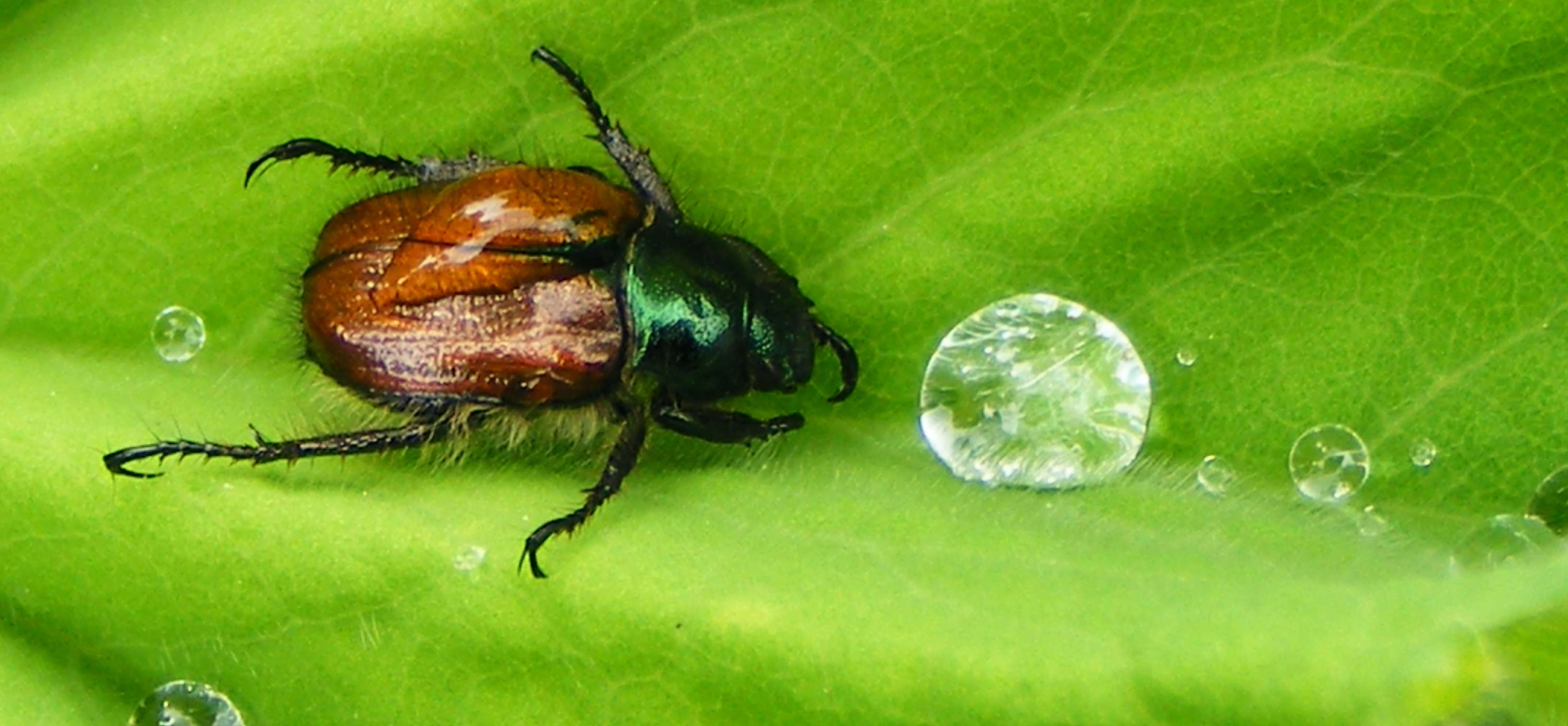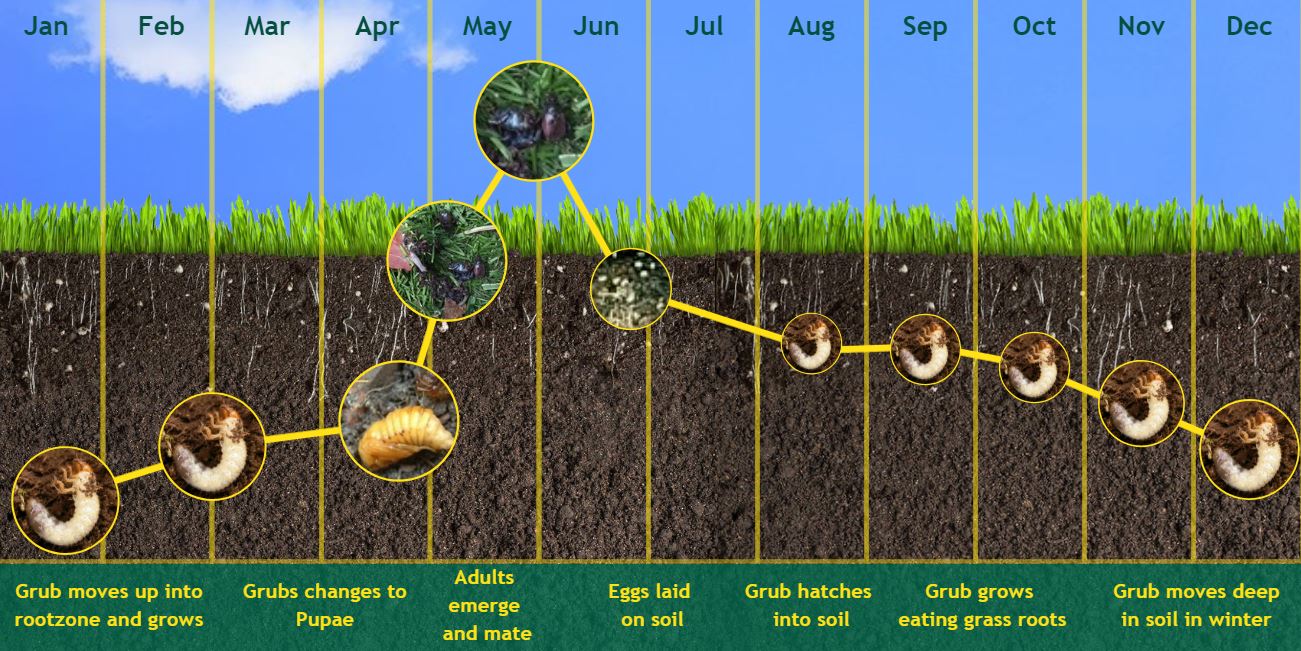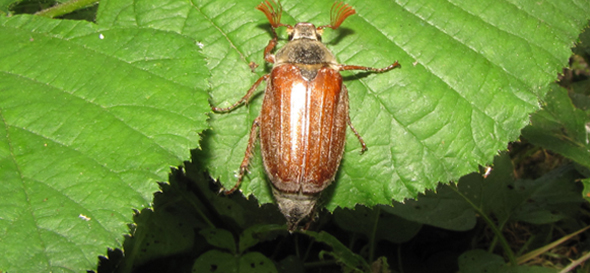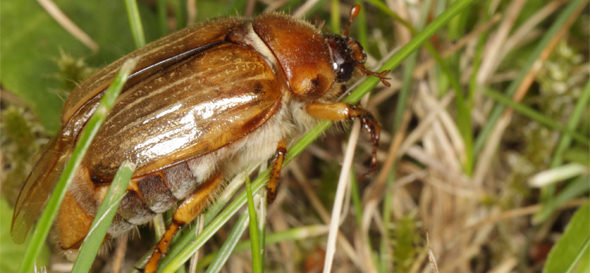Chafer Grubs
Garden chafer (Phyllopertha horticola)

The Garden Chafer is the most common of the UK chafer species.
With its greener and smaller appearance the adults are less noticeable, compared to Cockchafer or Summer Chafer.
Adults are typically less than 10 mm long, with brown/green wing cases and a bottle green head.
Most often found in late May or June, depending on temperatures.
Larvae emerge into adults over 10 days, frequently flying between 10 am and 12 am in sunny conditions.
Eggs are laid in groups of 2-6 eggs 10 cm below the soil surface. Females will lay 10-50 eggs over a season.
Garden Chafer have a one-year lifecycle, with larvae quickly progressing through to third instar stage by autumn, to emerge the following summer. Larvae are smaller, up to 15 mm at emergence.

Cockchafer – Maybug (Melolontha melolontha)

Cockchafer, or Maybug, are the largest of the UK Chafer species.
The adults are around 30 mm long with brown wing cases, white flashes under the wings, a black head and feathery antennae.
Adults typically appear between April and July, depending on the soil temperatures in spring.
Cockchafer are largely nocturnal, and can frequently be identified with activity around lights
Adults mate overnight sheltering on bushes and trees.
The females lay eggs 5–10 cm deep in the soil, depositing regular clusters of eggs in suitable areas over a period of several days. Where soil conditions are suitable, chafers will return to regular spots each year.
Cockchafer have a three-year lifecycle, with larvae moving up and down in the soil profile throughout the year; moulting and getting progressively larger each season. The Cockchafer are the largest larvae by the third-stage instar, at approx. 30-35 mm.
Summer Chafer (Amphimallon solst)

The Summer Chafer is more similar in appearance to the Cockchafer, but is significantly smaller at 15-20 mm long.
It has a mid-brown wing sheath (elytron) colour and dark, hairy pronotum (protecting the head).
The adults typically fly later in the season, between June and August, usually emerging at dusk.
Females lay eggs into the soil, with just two batches laid.
The Summer Chafer has a two-year lifecycle of larvae activity.
With thanks to Syngenta for the information